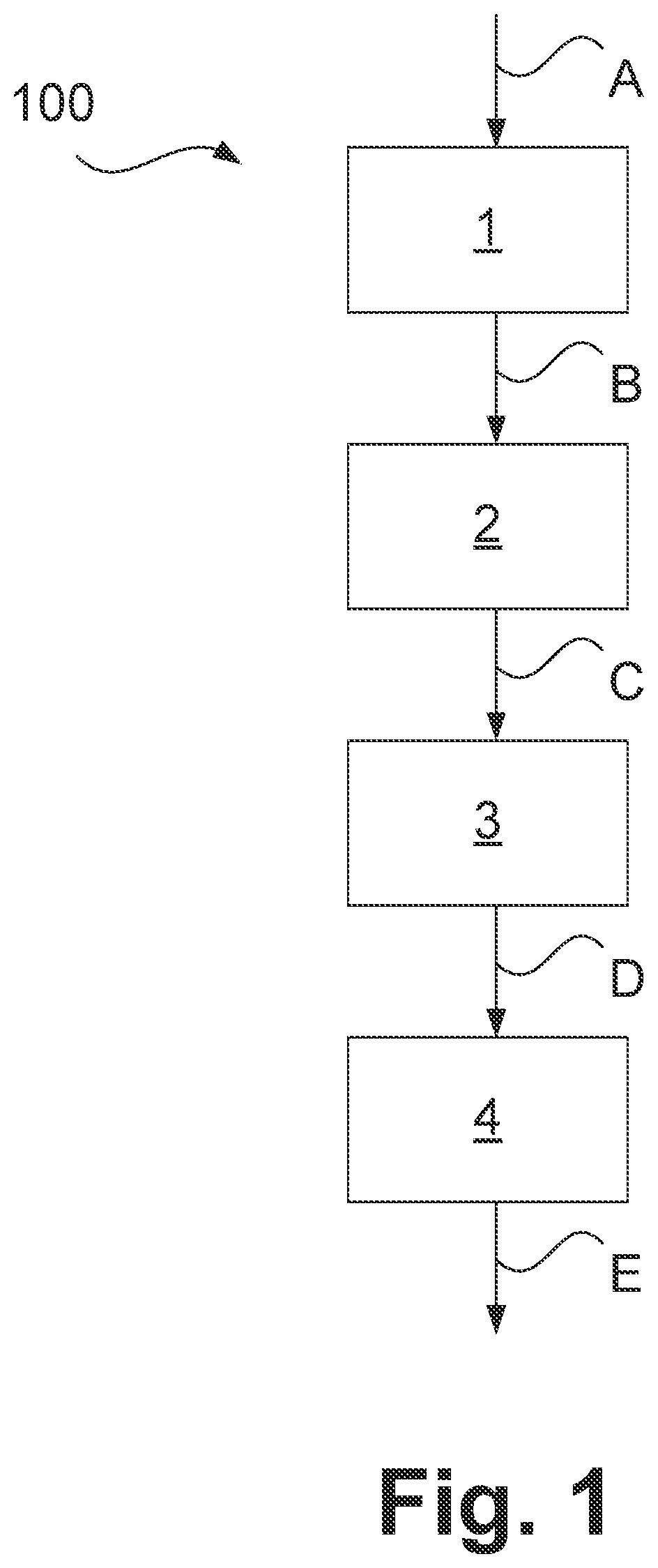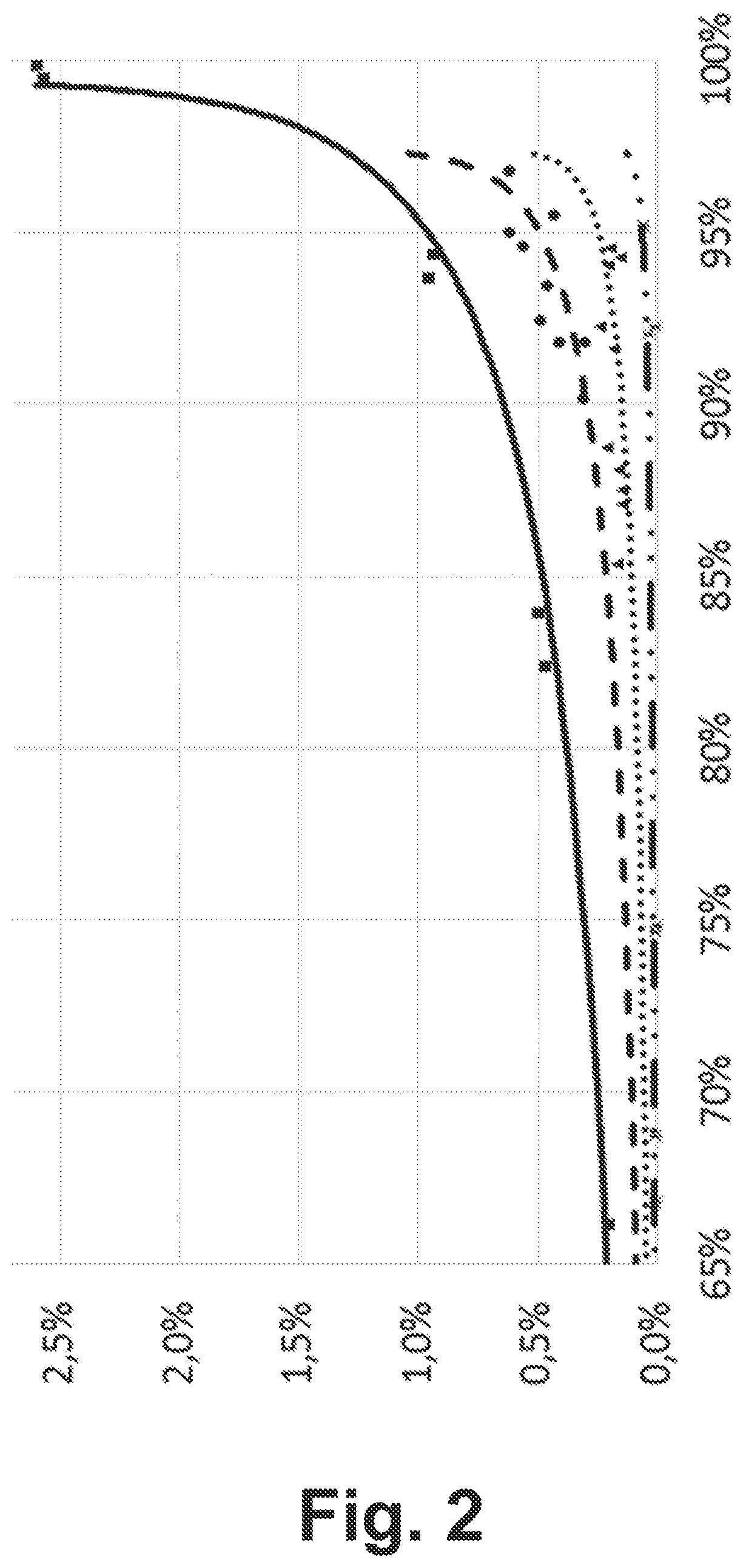Process and plant for producing alpha olefins
a technology of alpha olefins and processing plants, which is applied in the direction of hydrocarbon purification/separation, chemistry apparatus and processes, organic chemistry, etc., can solve the problems that the market requirements for fractions are no longer met, and achieve the effects of easy separation, easy separation, and easy superfractionation or secondary fractionation
- Summary
- Abstract
- Description
- Claims
- Application Information
AI Technical Summary
Benefits of technology
Problems solved by technology
Method used
Image
Examples
Embodiment Construction
[0051]The process disclosed in the above-mentioned RU 2 206 557 C1 (“reference”) was compared here with three examples (“Example 1” to “Example 3”). The results of this comparison as well as the catalysts used in each case and further reaction conditions are summarized in Table 1.
[0052]In the reference and in Examples 1 and 2, a macroporous sulfocationite was used as the catalyst, and in each of Examples 1 and 2, as in the reference, a commercially available product was used. Examples 1 and 2 differ from each other essentially in the amount of water used as reaction moderator, so that Example 2 can be used to demonstrate the advantages of one embodiment of the present invention.
[0053]In contrast, in Example 3, an amorphous chi and gamma dialuminum trioxide was used as the catalyst, again using a commercially available product. However, as in Example 1, a decidedly small amount of water was used. Example 3 thus demonstrates, merely for comparison with Examples 1 and 2, the features o...
PUM
| Property | Measurement | Unit |
|---|---|---|
| pressure | aaaaa | aaaaa |
| temperature | aaaaa | aaaaa |
| temperature | aaaaa | aaaaa |
Abstract
Description
Claims
Application Information
 Login to View More
Login to View More - R&D
- Intellectual Property
- Life Sciences
- Materials
- Tech Scout
- Unparalleled Data Quality
- Higher Quality Content
- 60% Fewer Hallucinations
Browse by: Latest US Patents, China's latest patents, Technical Efficacy Thesaurus, Application Domain, Technology Topic, Popular Technical Reports.
© 2025 PatSnap. All rights reserved.Legal|Privacy policy|Modern Slavery Act Transparency Statement|Sitemap|About US| Contact US: help@patsnap.com


